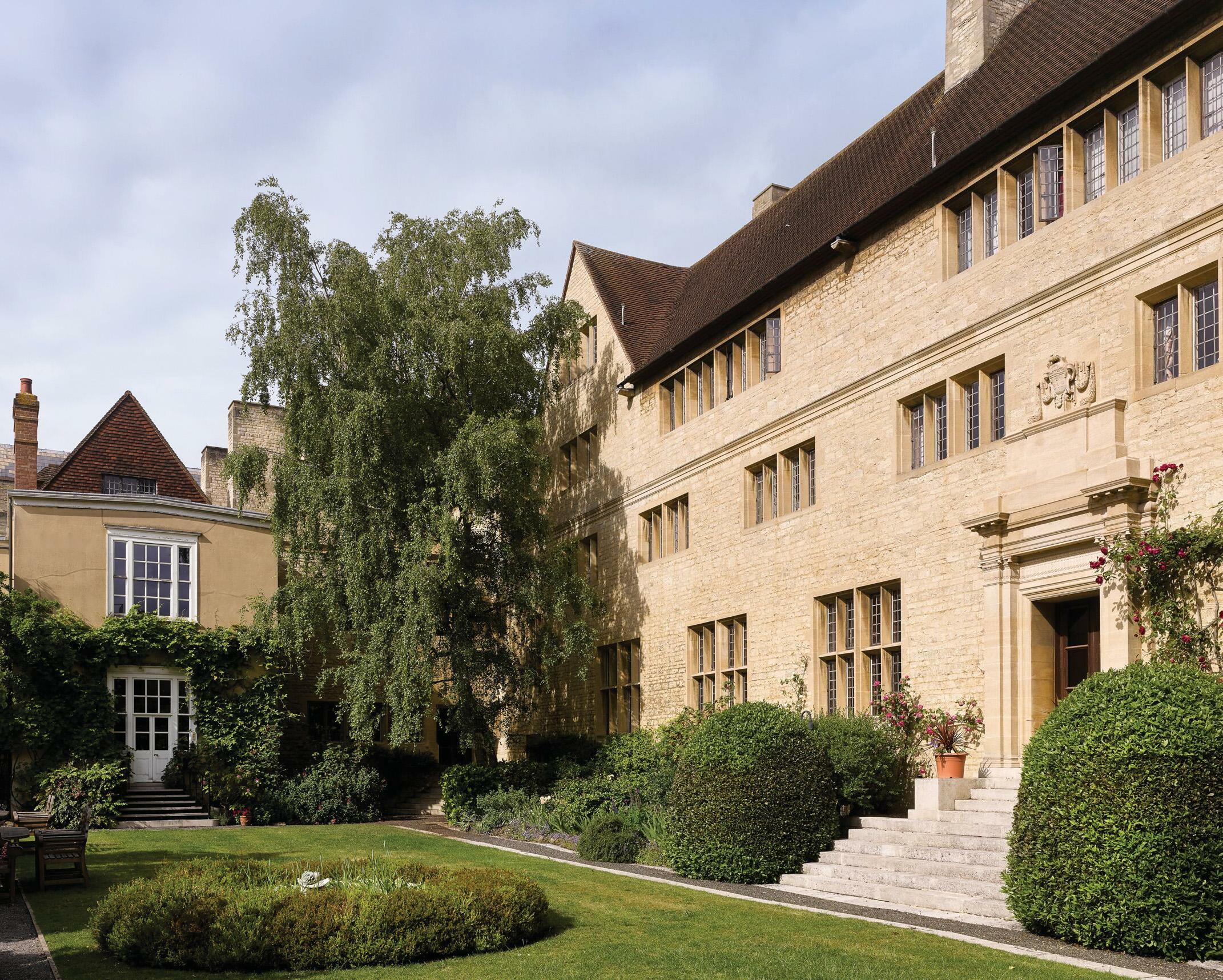
WHY not ask me?' enquired Sir Edwin Lutyens, when Father Martin D'Arcy needed an architect for Campion Hall in Oxford. It was 1934 and Lutyens was then in his mid sixties, knighted and the most famous architect in the country, whose oeuvre ran to some 550 buildings. 'But, Ned, D'Arcy replied, 'you have the reputation of being most appallingly expensive.' Lutyens assured him that his fees would be minimal and that he would keep an eye on the cost. He thus entered the esoteric, socially glamorous world of Jesuit Oxford, where architectural austerity would be combined with high art to form a haunt for, among others, Evelyn Waugh. Lutyens told Sir John Rothenstein that he considered Campion Hall his best building.
Although Oxford’s doors had been open to men of all faiths since 1871, it was only at the end of the century that the English Hierarchy thought it safe for Roman Catholics to attend. First on the scene had been the Jesuits, who opened Pope’s Hall—named after its master Thomas Pope, Society of Jesus (SJ)—in 1896. It was a small establishment, next to the Lamb and Flag pub, which, by the 1930s, seemed inadequate both to the numbers of Catholics at the University and the image that D’Arcy wanted to project. D’Arcy, who had been teaching at Oxford since 1927, was Roman Catholicism’s leading public intellectual in the UK, a magnet for an intellectual and social elite: among those who converted were Evelyn Waugh and Graham Greene. A vivid description of him comes from the artist Stanley Parker: his etiolated face looked as if it was ‘wasted to the bone by the rarest and most exquisite emotions, seared with the imprint of the deepest thought, consumed, almost, by the inner fire which blazed and smouldered in his eyes’.
This story is from the April 05, 2023 edition of Country Life UK.
Start your 7-day Magzter GOLD free trial to access thousands of curated premium stories, and 9,000+ magazines and newspapers.
Already a subscriber ? Sign In
This story is from the April 05, 2023 edition of Country Life UK.
Start your 7-day Magzter GOLD free trial to access thousands of curated premium stories, and 9,000+ magazines and newspapers.
Already a subscriber? Sign In

Give it some stick
Galloping through the imagination, competitive hobby-horsing is a gymnastic sport on the rise in Britain, discovers Sybilla Hart

Paper escapes
Steven King selects his best travel books of 2024

For love, not money
This year may have marked the end of brag-art’, bought merely to show off one’s wealth. It’s time for a return to looking for connoisseurship, beauty and taste

Mary I: more bruised than bloody
Cast as a sanguinary tyrant, our first Queen Regnant may not deserve her brutal reputation, believes Geoffrey Munn

A love supreme
Art brought together 19th-century Norwich couple Joseph and Emily Stannard, who shared a passion for painting, but their destiny would be dramatically different

Private views
One of the best ways-often the only way-to visit the finest privately owned gardens in the country is by joining an exclusive tour. Non Morris does exactly that

Shhhhhh...
THERE is great delight to be had poring over the front pages of COUNTRY LIFE each week, dreaming of what life would be like in a Scottish castle (so reasonably priced, but do bear in mind the midges) or a townhouse in London’s Eaton Square (worth a king’s ransom, but, oh dear, the traffic) or perhaps that cottage in the Cotswolds (if you don’t mind standing next to Hollywood A-listers in the queue at Daylesford). The estate agent’s particulars will give you details of acreage, proximity to schools and railway stations, but never—no, never—an indication of noise levels.

Mission impossible
Rubble and ruin were all that remained of the early-19th-century Villa Frere and its gardens, planted by the English diplomat John Hookham Frere, until a group of dedicated volunteers came to its rescue. Josephine Tyndale-Biscoe tells the story

When a perfect storm hits
Weather, wars, elections and financial uncertainty all conspired against high-end house sales this year, but there were still some spectacular deals

Give the dog a bone
Man's best friend still needs to eat like its Lupus forebears, believes Jonathan Self, when it's not guarding food, greeting us or destroying our upholstery, of course